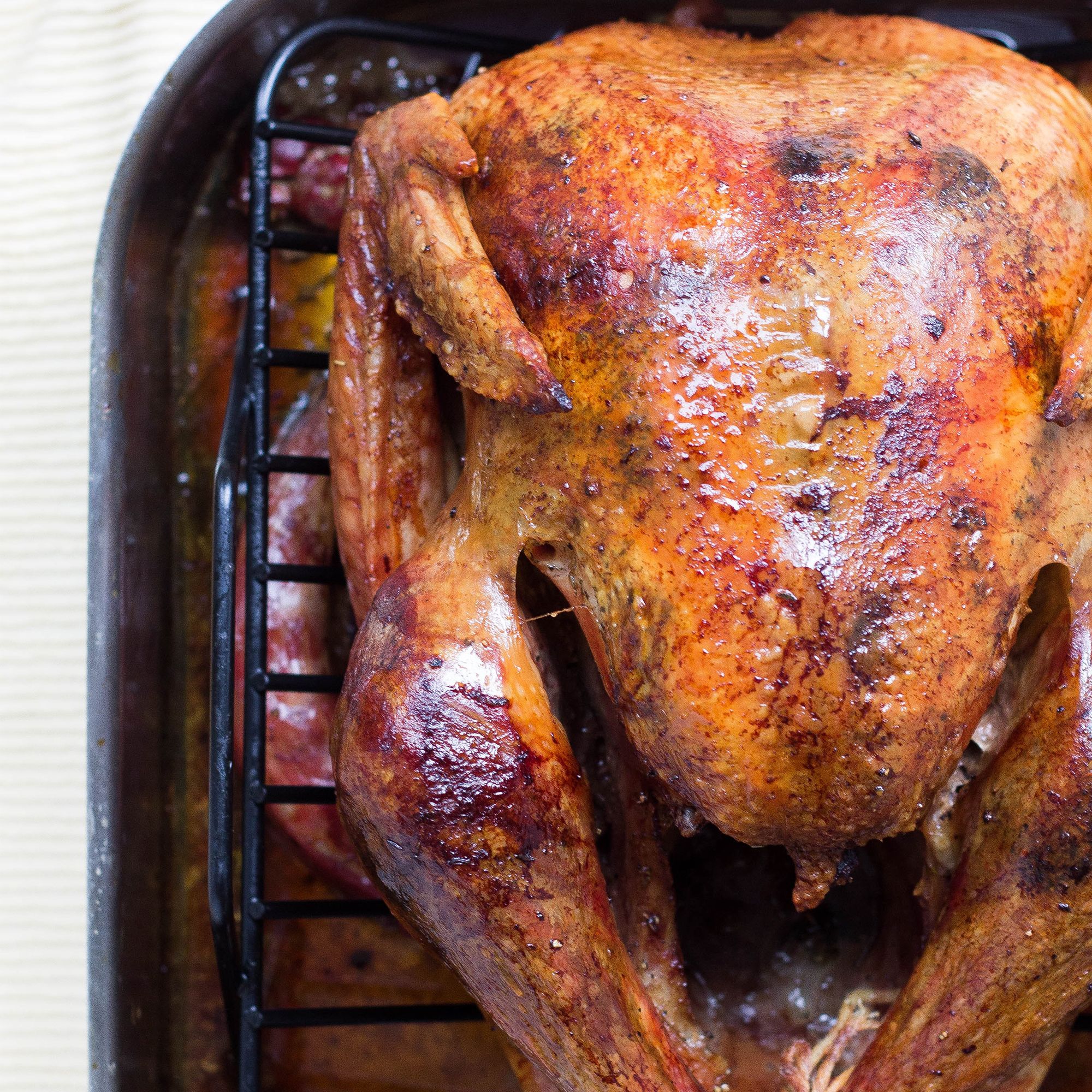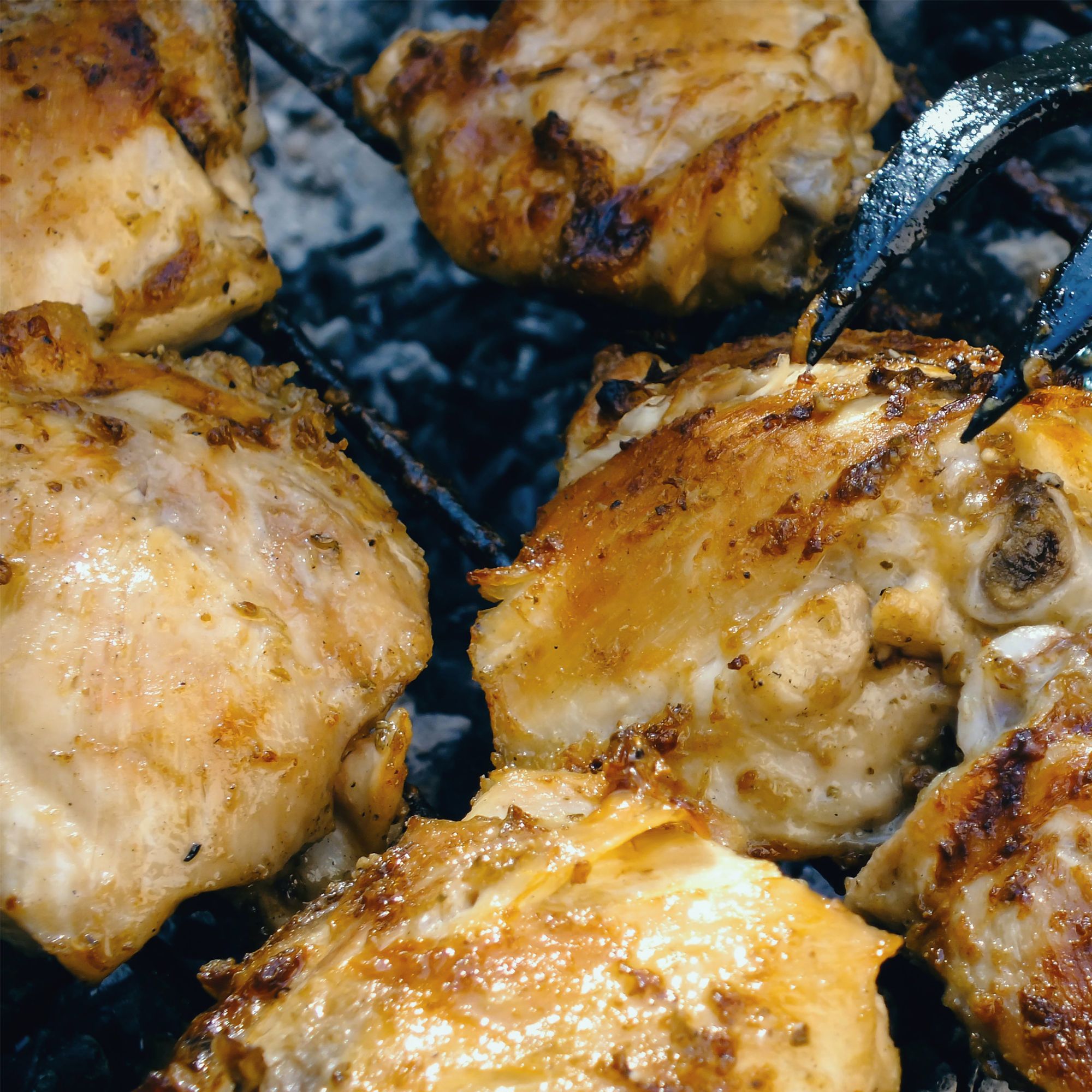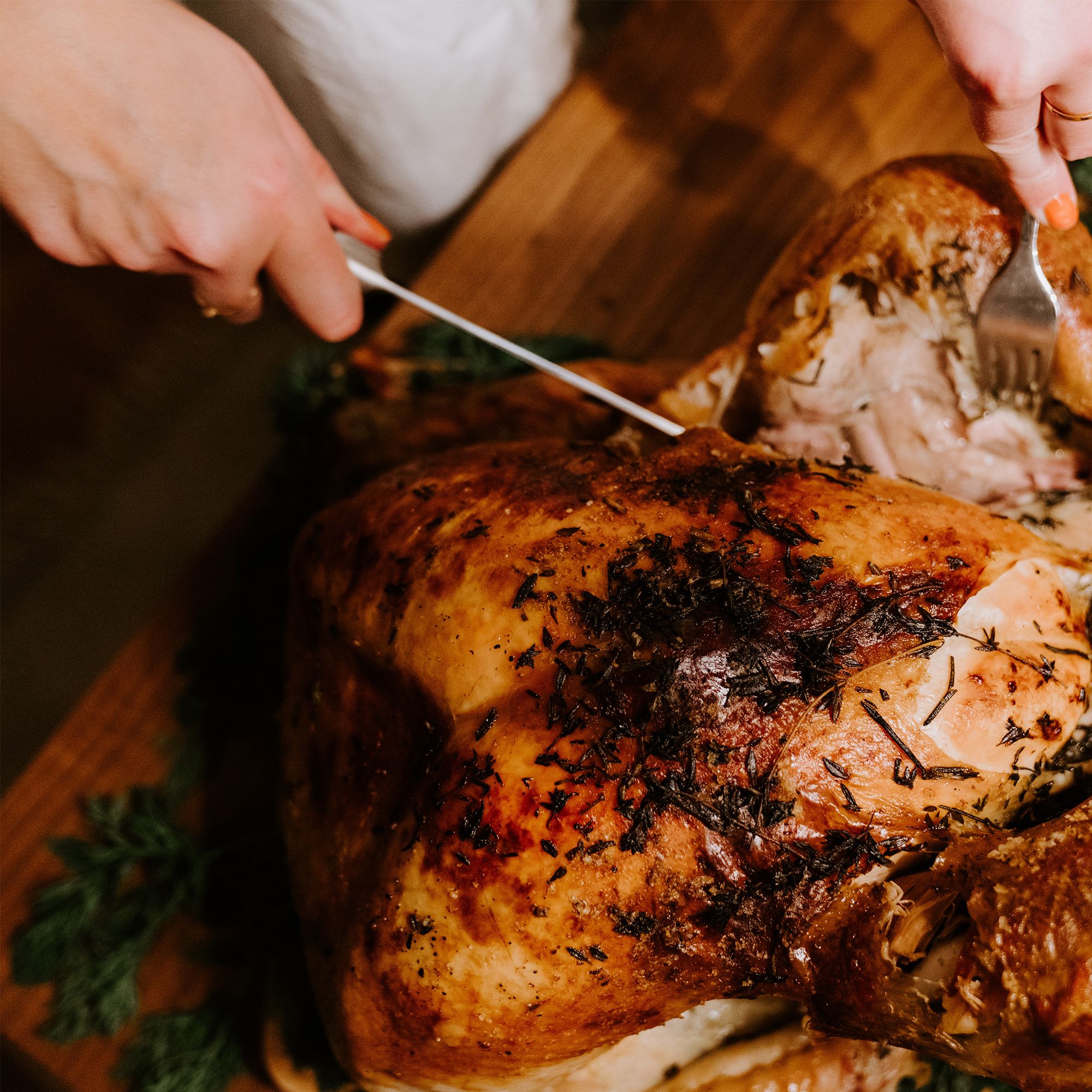A Guide On How To Cook Turkey

How To Cook Turkey
Turkey will be forever linked to festivities. When many people think of Christmas, they picture a large family sitting around a table, ready to tuck into a feast of delicious roast turkey with all the trimmings. In fact, turkey is a great bird to eat at any time of the year and not just on special occasions.
Most of us have a good idea of cooking turkey, but it’s usually not that easy to gauge when it’s ready, especially if you’re dealing with a large bird to feed several people. Turkey is considered a fairly healthy meat because of its low fat content. This low fat content can sometimes lead to a drier texture.
In order to keep the meat moist, it’s recommended that you baste regularly during cooking and you can try things like adding a whole lemon to the cavity (which produces steam as it cooks) or soaking the bird in brine before it is roasted.
Brining Turkey Overnight
Brining is great as it acts as a sort of marinade. Brining turkey in this marinade overnight will help absorb the flavours. It increases the tenderness and allows the cooked meat to remain moist and tender, especially when you add herbs and spices to the solution, such as bay leaves, coriander, a Knorr Chicken Stock Pot, fennel seeds, fresh thyme, red wine and honey.
Additionally, melt some olive oil on very gentle heat, add a Knorr Chicken Stock Pot and stir until melted. Remove from the heat, leave to cool for 5 minute. Add some black pepper and rub the mixture into the skin with your fingertips before it goes into the oven. This gives the skin fantastic added flavour and a lovely golden appearance.
Turkey Preparation
Before buying and turkey preparation, it’s always good to find out a little about how the bird was reared. Your local butcher can usually help you with this. Free-range conditions often produce a denser texture, which makes the turkey more succulent. It is good practise to choose a turkey that is round, plump and evenly coloured.
The skin should be soft and dense at the same time. Ideally, you will be able to buy a fresh turkey and cook it straight away but if you have to buy frozen, it’s important that you leave enough time for the turkey to defrost.
If not done properly, this can lead to uncooked turkey and even food poisoning. Defrosting can take up to a couple of days in the fridge, or up to 10-12 hours per kilo. Putting the bird into a wide deep tray allows for any excess juice to be captured as it thaws out.
Remove the giblets (liver, heart, gizzard) after the turkey has thawed (if using a frozen bird). The giblets can be found in the main body cavity of the bird, between the wings. Your butcher will have placed them there, in a small plastic bag. Make sure you remove them before cooking the bird. Giblets can be boiled separately to add extra flavour to your gravy. It’s best to weigh your turkey after it has been stuffed to calculate the roasting time required.
If the turkey is larger than your food scales then you could use the bathroom scales. If the turkey weighs 1kg, cook for 1hr and 30 minutes at 200°C. Add an extra 20 minutes cooking time for each extra kilogram of weight. So if your turkey weighs 2kg then cook for 1hr and 50 minutes, and if your turkey weighs 3kg, cook for 2hrs and 10 minutes. Allow an extra 60 minutes for the turkey to rest afterwards. However, if the bird is more than 4kg, allow 90 minutes resting time.
Be sure to stuff the turkey only when you’re confident it is ready to go into the oven. Place stuffing inside the neck cavity of the bird. Stuffing can vary widely: There’s traditional stuffing such as sausage, chestnut, and onion and sage; and then there are more adventurous stuffing ideas made with ingredients such as pistachios, dried apricots and cranberries, apples, walnuts and prunes. There are so many delicious recipes to choose from!
Why not try out our juicy and aromatic Citrus and Herb Turkey Recipe. A delicious, zesty mixture of squeezed orange, fresh thyme, sage, parsley, pepper and a melted Knorr Chicken Stock Pot is rubbed over the turkey for maximum taste. Stuff the turkey with orange and onion, baste regularly, and a couple hours later you’ll have a dish that’s bursting with flavour.
Recommended turkey cooking times and temperatures per kg
Optimum cooking temperature for turkey is roughly 200°C. At these temperatures, our recommended cook times are:
- 7.5kg cook for 4hrs 00 mins
- 7.0kg cook for 3hrs 50 mins
- 6.5kg cook for 3hrs 40 mins
- 6.0kg cook for 3hrs 30 mins
- 5.5kg cook for 3hrs 20 mins
- 5.0kg cook for 3hrs 10 mins
But please remember, not all ovens are temperature accurate so always be careful to ensure your turkey is cooked all the way through before serving. Once cooked, the ideal internal temperature of the turkey should be 70-80°C. Use a food thermometer to check the temperature and a skewer to pierce the thigh deeply to see if the juices that ooze out are clear. If the juices are still pink, put the turkey back in the oven for another 20 minutes and check again.
There are two ways to carve a turkey (turkey slicing). There is the ‘traditional method’ of cutting the turkey from the breast into thin slices, or the ‘kitchen method’ whereby a large chunk of the breast is cut and separately carved into slices on another plate. For the gravy just add a Knorr Chicken Stock Pot and crushed garlic together in the roasting tray with the juices from your turkey. Deglaze the pan with some corn flour and water, bring to the boil, making sure to scrape all the sticky bits from the roasting tray.
Reduce the gravy by simmering or add some cornflour to thicken. Don’t forget to add the extra juices from the turkey whilst it is resting as well. Once you have the desired consistency, strain the gravy to remove any lumps and serve. For best results make your gravy in the tray the turkey has just been cooked in. Another great option for your gravy is to use our great Knorr Rich Savoury Gravy or Knorr Roast Meat Gravy. They are quick and easy to prepare.
You can always add a dash of white wine and some freshly chopped thyme and parsley to the gravy as well as the juices from the turkey. It’s the perfect way to enjoy your turkey roast.
For these and more, view our articles
Next article

Ten Top Tips For Perfect Roast Chicken
whatsfordinner Menu Planner
Simply answer a few dietary questions and we will serve you a personalised weekly menu featuring recipes that suit your needs.



